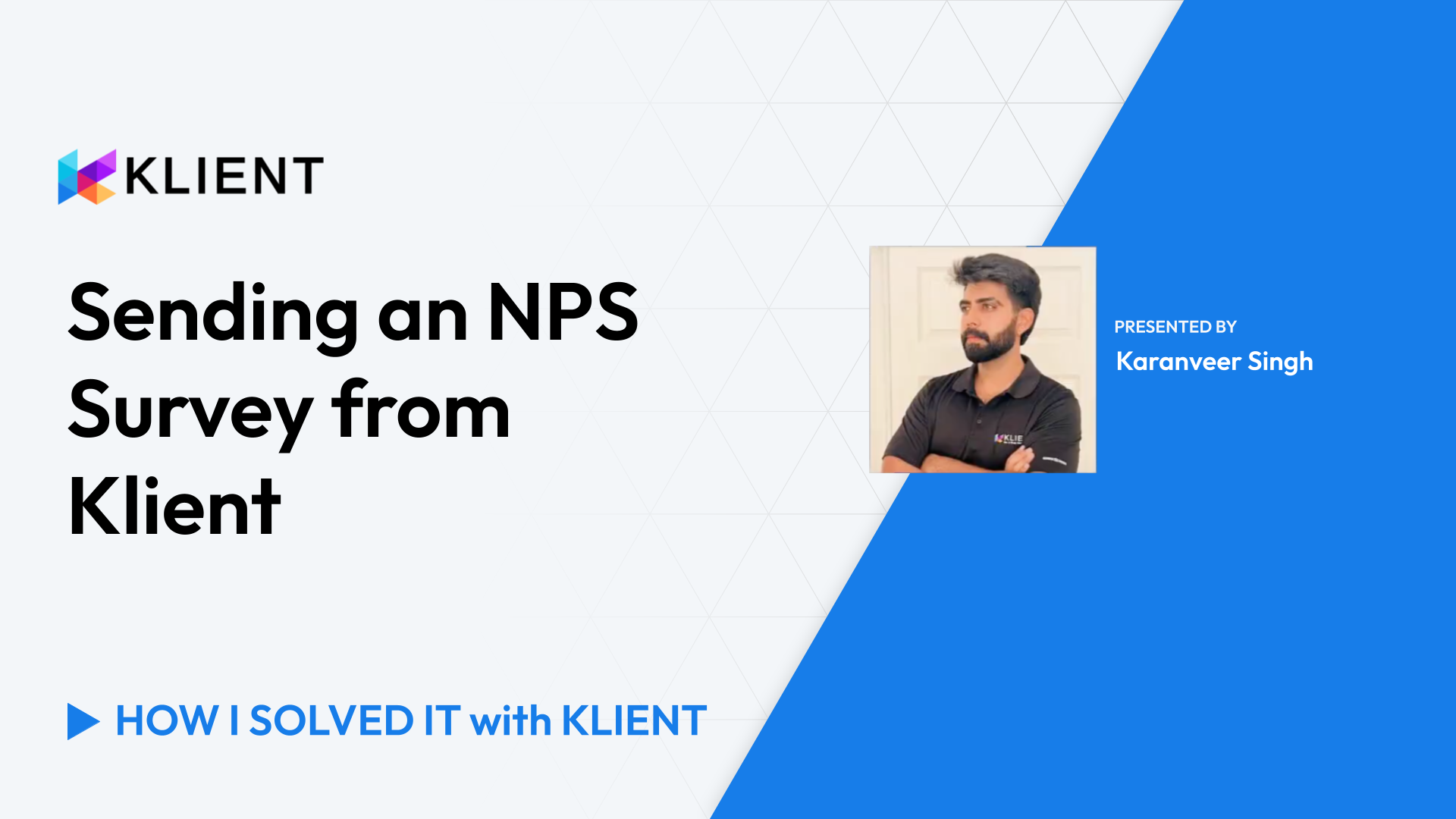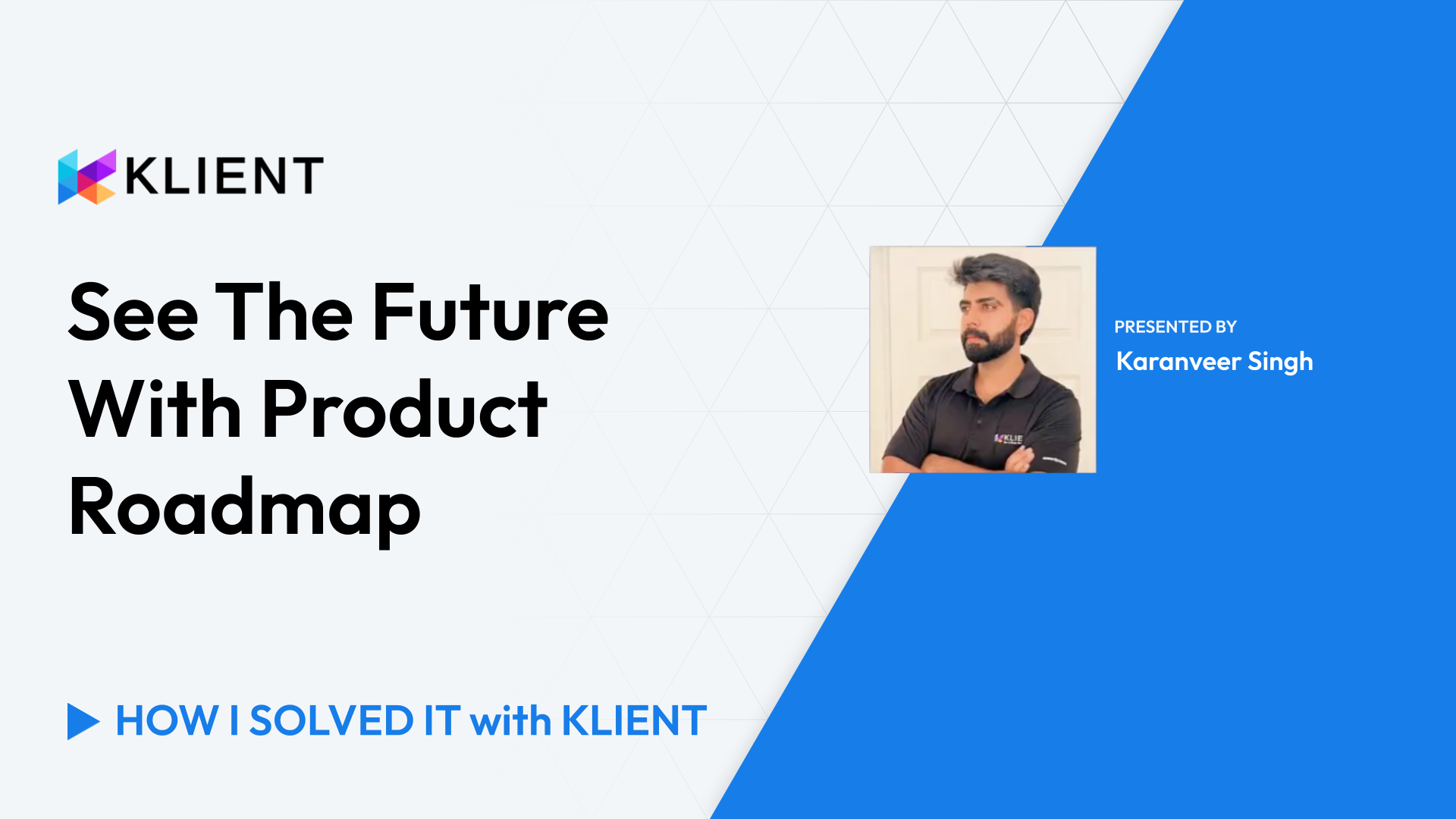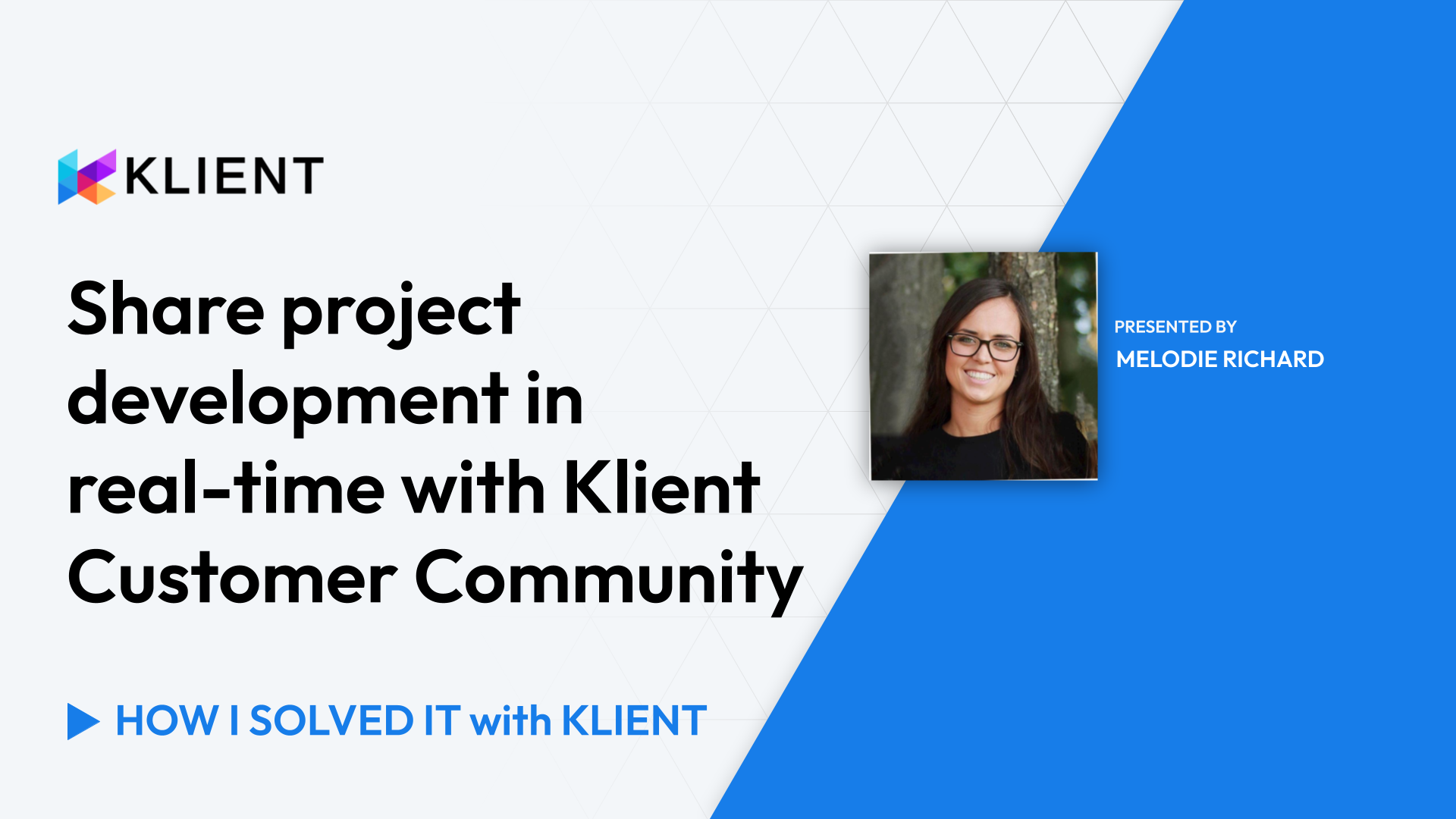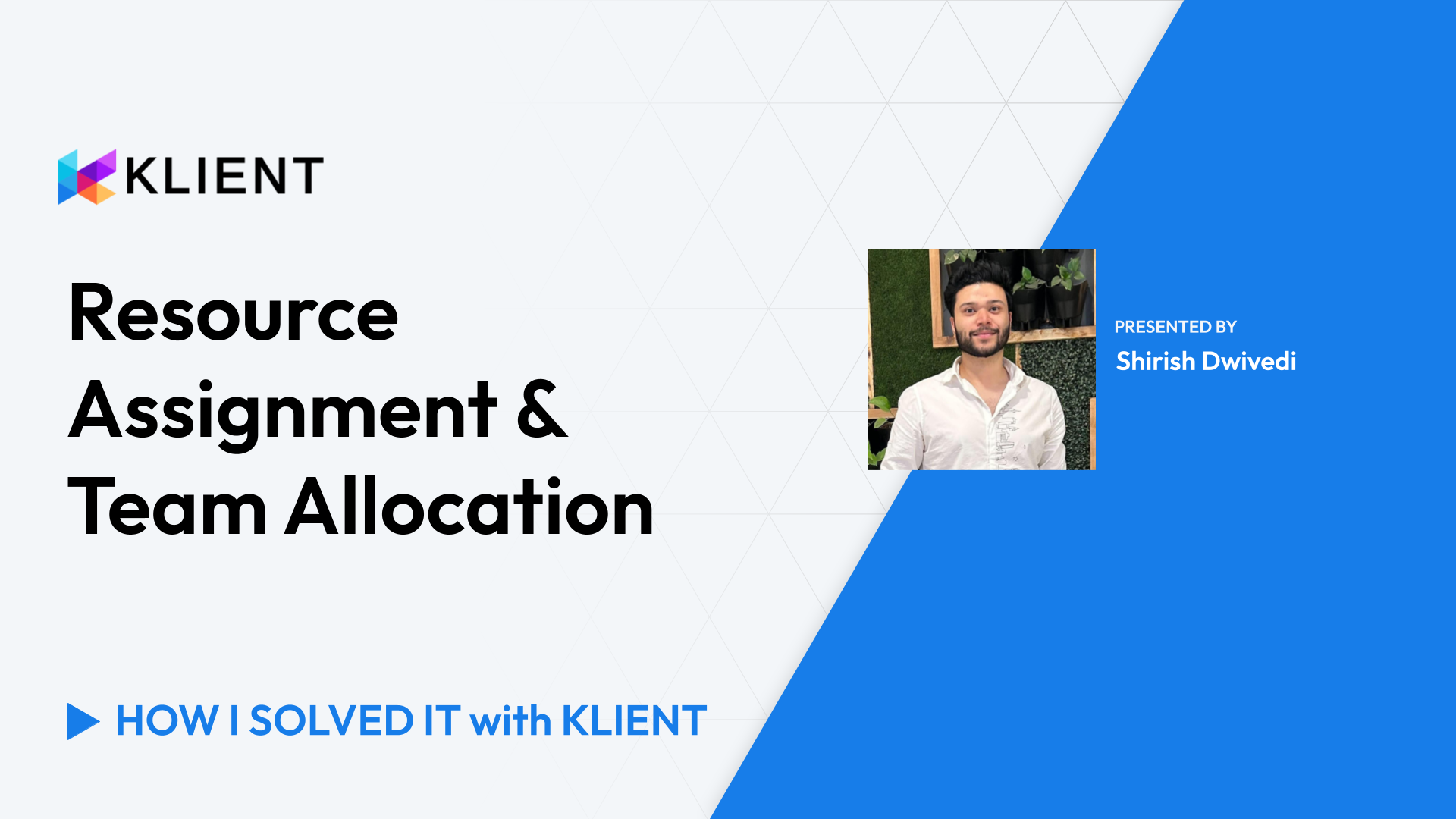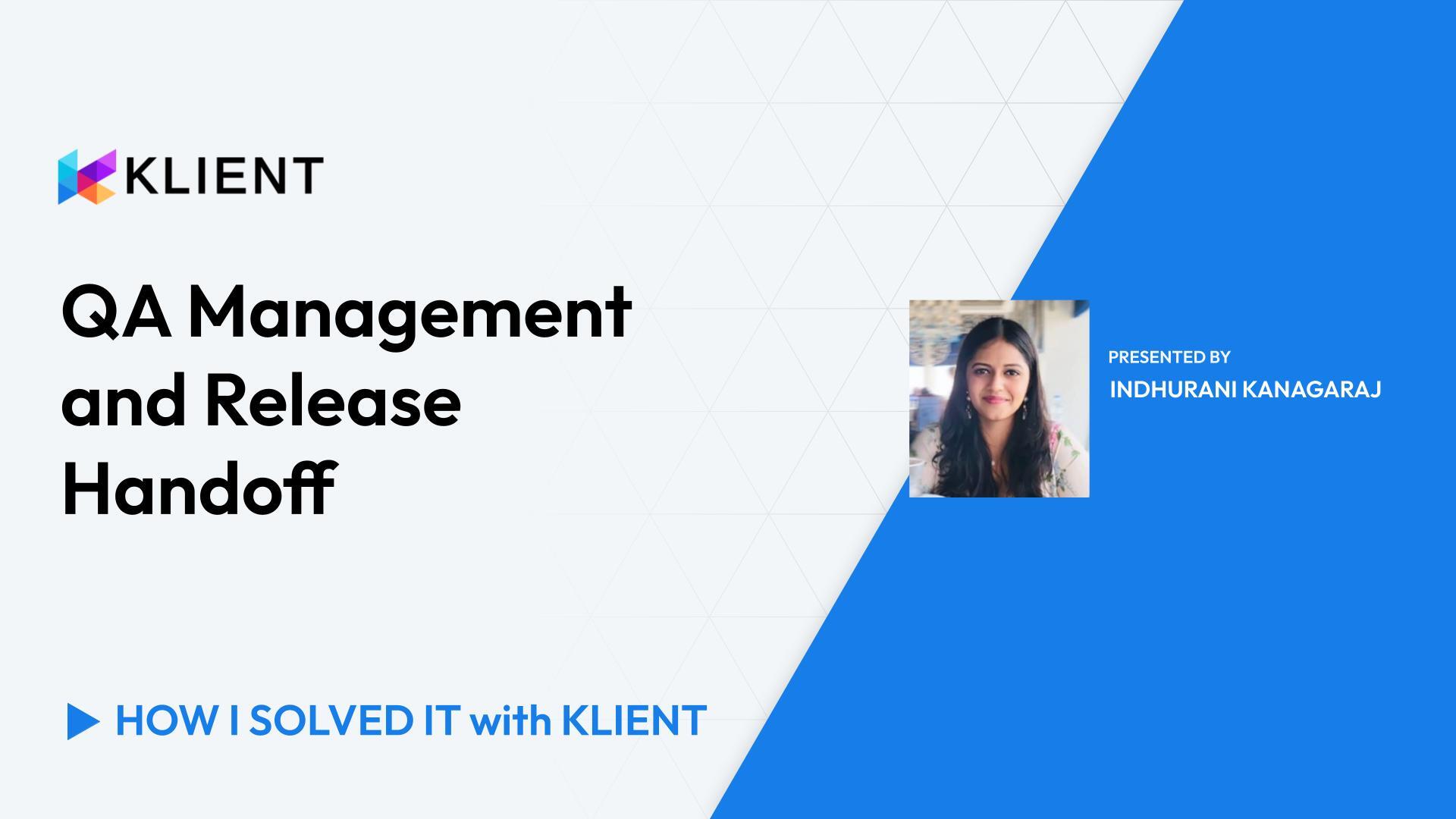Improve Transparency with Efficient Project Status Updates
Efficient project status updates are crucial for transparency and project success. In this video, Dominic from Klient addresses common challenges, shares best practices, and shows how Klient’s project platform helps deliver clear updates. Key items covered include:
Challenges in keeping stakeholders informed
Best practices for efficient project updates
Utilizing Klient for project status reports
Maintaining clarity and simplicity in updates
Using visual aids for better understanding
Streamlining communication with stakeholders
Ensuring consistency and documentation
1. Introduction (0:00 – 0:13)
Greetings everyone! Dominic for another ‘How I Solve It With Klient’! In today’s session, I want to explore how we can improve transparency in your projects through efficient status updates.
2. Importance of Transparency (0:14 – 0:30)
We all know that keeping everyone informed is crucial for your project success. So I want to review a few challenges, best practices to overcome them, and then eventually how Klient can help with that.
3. Challenges in Project Updates (0:31 – 1:14)
So let’s start by looking at some challenges. First one, ‘Keeping everyone on the same page’. We all know that it’s tough to ensure that all team members and stakeholders have the same understanding of the project as miscommunication can lead to confusion and eventually setbacks. Then especially when it comes to ‘Meeting evolving expectations’, the project will change over time and then the expectations might evolve. So we need to make sure that everyone has the same understanding of the project. Taming the ‘he who shall not be named AKA scope group’ is also a good challenge. This could derail timelines and budget if we’re not monitoring correctly. ‘Maintaining the team morale and implication’. So if we’re not sending regular updates, the team members might feel disconnected or undervalued. So you want to keep that part of your routine. ‘Managing the budget’, we all know that it is crucial so if we’re not providing transparent updates, it could lead to bad surprises that no one likes to manage.
4. Best Practices for Efficient Updates (1:15 – 2:24)
So best practices that can help us alleviate those challenges. First ‘Address changes promptly’. So when it arises, talk with the team. Make sure that everyone is aligned with the new direction if there are any changes. That can be supported by a ‘Consistent reporting schedule’ so if you’re building the habit of sending a weekly, biweekly, the team will be expecting that and will make sure that we have that touch point that we have to make sure that we’re keeping us aligned. Keep those ‘Clear and concise’. Be straightforward, go to the point. Don’t go through too much fuss. We want to make sure that we are getting the point of what you’re trying to convey. And one thing that can help with that is ‘Highlighting just a few key metrics’ so that as we are evolving in the projects, we’re always looking at the same metrics. That will help also in getting an overall feeling of the project progress. And then final, but very important is ‘Sending it to the key stakeholders and the sponsors’. They are your team. They will help you support the project. So the decision maker needs to be in there. Maybe not just the PMs on the customer side, but also the sponsor is always often helpful.
5. Introduction to Klient’s Solution (2:25 – 2:47)
So, without further ado, let me show you how we can do that in Klient. So starting here on a Klient project record page, I’m gonna reach my ‘Project status report’, a sub-tab I like to do on my page layout just to focus on the key information for that process.
6. Utilizing Klient for Project Updates (2:48 – 3:20)
So here I have a few rags with my project health and budget schedule and scope indicators. Eventually, we’re going to use the pictures here, the images, to have a visual cue on the report and some key fields mainly on this example. So hours estimated versus logged. You could have different fields here that you want to display based on the way you’re delivering your projects. And then obviously some notes, details, what we’re trying to convey. This is where we need to keep it clean and concise. Probably not being shy of addressing issues, addressing some warnings, maybe too many meetings we’re having. So you want to make sure that this is conveyed clearly to the team.
7. Maintaining Clarity and Simplicity (3:21 – 3:48)
This is where we need to address the issue when it starts and not when it’s too late. On top of that, we could have homeworks, we could also have roadblocks, what we’re working on, what we completed. So just keep it simple but provide where we stand with the project here. If you do it weekly, what did you do the last week and what’s upcoming?
8. Using Visual Aids (3:49 – 4:12)
Then I like to take a snapshot, maybe of a project plan, where you could have more columns showing a bit more detailed information, the timeline, what’s completed and what’s not. And then also a snapshot of a report, where I’m showing uninvoiced hours. So, in between invoices so that there are no surprises. It will also provide information on what we worked on in the last days, weeks.
9. Streamlining Communication (4:13 – 4:43)
So I think that’s kind of interesting also for the customer to know. And based on that, we have one click here where we can access that report, which is basically a summary of what we just looked at. From here we can easily send the email directly from our project. So selecting an email template that can provide some consistency amongst the team and how we’re sending that, here, selecting the main contacts, stakeholders, sponsors that we’ve identified on the account so that we can hit ‘Next’ and send the email right from here.
10. Ensuring Consistency and Documentation (4:44 – 5:23)
So as we’re using an email template, we can format that with some key information right in the email and provide more or less detail in the email body itself. But we always have that PDF document that is attached, which will also attach to your project the same way, so you can keep those historical artifacts on how the project progressed. So sending that will process through your email and send directly to the customer. So hopefully that it was helpful. You found some insight on how you can improve your transparency and provide quick updates to your customer using project status reports. Any question? Reach out to support@klient.com, it will be a pleasure to discuss further. Thanks! Have a great day!

Found this helpful?
Here are some similar videos in our serie How I Solved It with Klient
Subscribe to our channel
Visit and subscribe to our channel for more insights on leveraging Klient to solve your business challenges.





